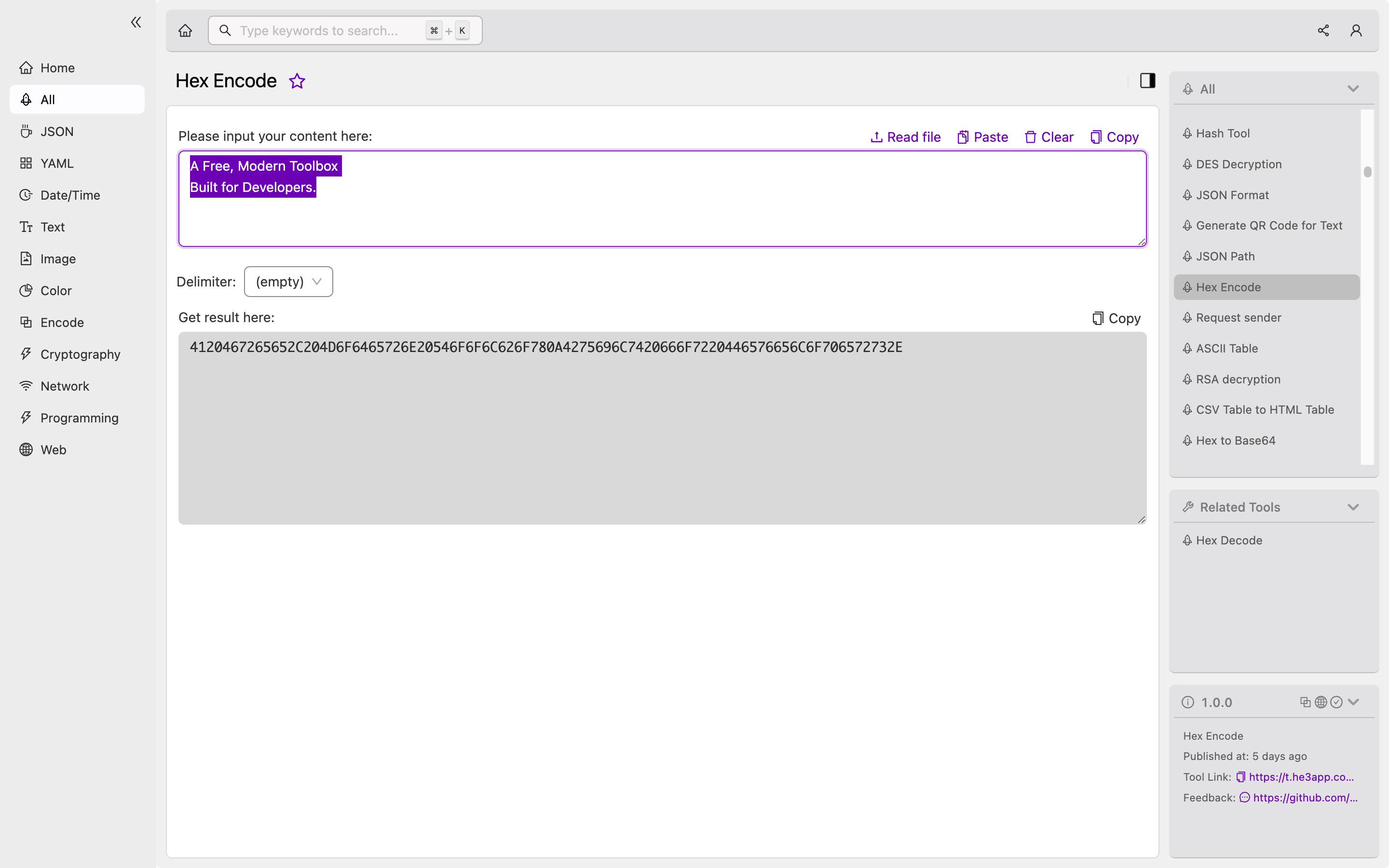Introduction
Data security is one of the most important aspects of any programming project, and developers must take appropriate measures to ensure that data is not compromised. One of the most common ways to do this is through data encoding, and Hex Encoding is a popular method used by developers to improve data security. In this article, we’ll explain the concept of Hex Encoding, how it works, scenarios where developers can use it and key features of the encoding method.
What is Hex Encoding?
Hex Encoding or Hexadecimal Encoding is a method of encoding data using hexadecimal digits or base-16 representation. In this encoding method, binary data is converted into ASCII or Unicode text that can be easily transmitted over networking protocols or stored in databases. It works by converting each byte of binary data into two hexadecimal values, and as a result, the size of the encoded data increases by two.
Hex Encoding is widely used in cryptography to ensure that sensitive data such as passwords and other credentials are secure. It is also commonly used in web development where it’s easier to work with ASCII or Unicode data instead of binary data.
How Hex Encoding Works
To understand how Hex Encoding works, let’s take a look at an example:
Consider that we want to encode the binary data 01001101 01100001 01110010 01101011. In this case, we first split the data into bytes, giving us 01001101, 01100001, 01110010 and 01101011.
Next, we convert each byte into two contiguous hexadecimal values. The first byte 01001101 is converted to 4D, the second byte 01100001 is converted to 61, the third byte 01110010 is converted to 72, and the fourth byte 01101011 is converted to 6B. Combining the hex values gives us the encoded string 4D61726B.
Or you can use Hex Encode tool in He3 Toolbox (https://t.he3app.com?e9qs ) easily.

Scenarios for Developers
Developers use Hex Encoding in various scenarios such as:
-
Data transfer over networks- Hex Encoding is used to ensure that binary data is easily transmitted over a network using ASCII or Unicode text.
-
Secure storage of sensitive data- Sensitive data, such as passwords and other credentials, is typically Hex Encoded to ensure that it is securely stored.
-
Web Development- Hex Encoding is often used in web development to work with ASCII or Unicode characters instead of binary data.
Key Features of Hex Encoding
Some of the key features of Hex Encoding include:
-
Easy to implement and widely supported- Hex Encoding is simple to implement, and most programming languages support it natively.
-
Improved data security- Hex Encoding helps to make data more secure by obfuscating binary data that can be susceptible to hacks and data breaches.
-
Increased data size- Since each byte of binary data is converted into two hexadecimal values, the size of the encoded data increases by two.
Misconceptions and FAQs
Misconception: Hex Encoding is a form of encryption
Hex Encoding is not a form of encryption. Instead, it’s a method of encoding data to make it more secure when transmitted over networks or stored in databases.
FAQ: Can Hex Encoding be used for all kinds of data?
Yes, you can use Hex Encoding to encode any kind of data, including images, video, or text.
FAQ: Can Hex Encoding be reversed to obtain the original data?
Yes, Hex Encoding can be reversed through the process of Hex Decoding, which involves converting hexadecimal encoded values back into binary data.
Conclusion
Hex Encoding is a popular method for encoding data that is widely used by developers to improve data security. This encoding method helps to make data more secure by converting binary data into ASCII or Unicode text that can be transmitted over networks or stored in databases. By understanding how Hex Encoding works, developers can take appropriate measures to ensure that data is secure and not exposed to data breaches.
Wikipedia Links: https://en.wikipedia.org/wiki/Hexadecimal https://en.wikipedia.org/wiki/Ascii https://en.wikipedia.org/wiki/Data_security